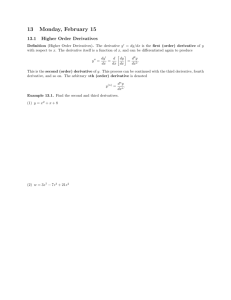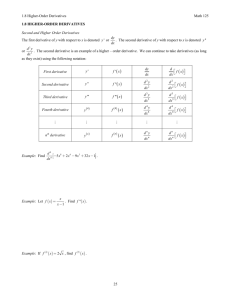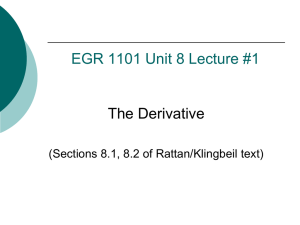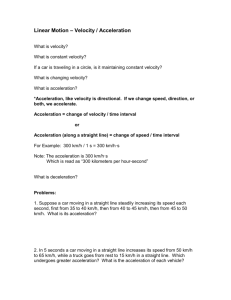Section 3-6
advertisement
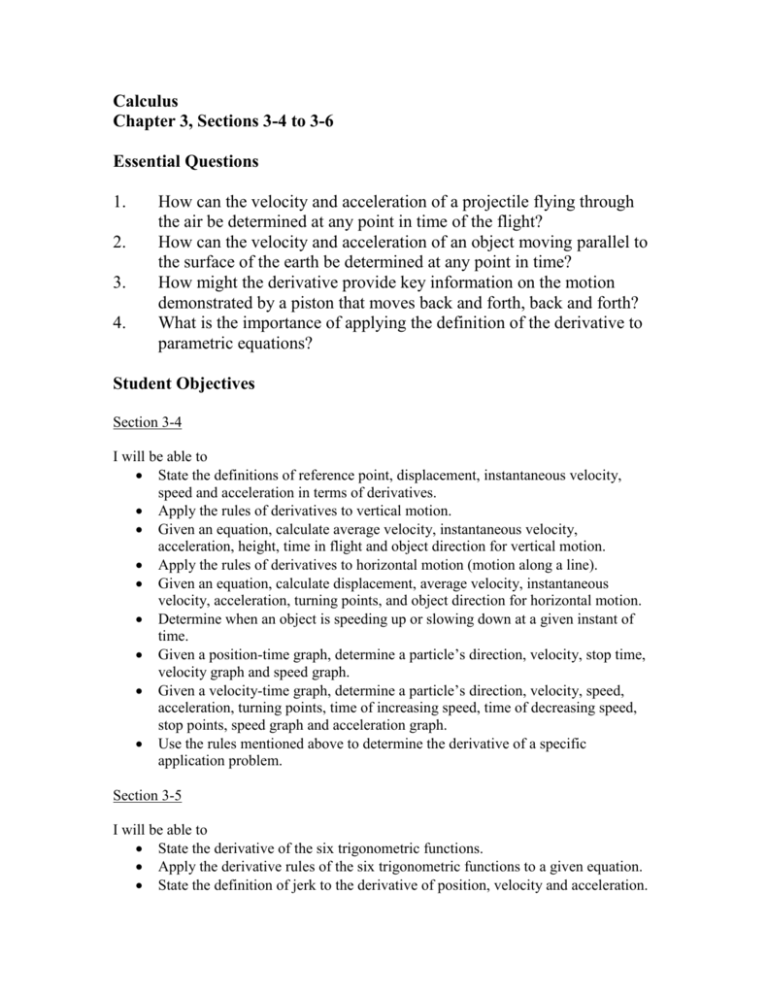
Calculus Chapter 3, Sections 3-4 to 3-6 Essential Questions 1. 2. 3. 4. How can the velocity and acceleration of a projectile flying through the air be determined at any point in time of the flight? How can the velocity and acceleration of an object moving parallel to the surface of the earth be determined at any point in time? How might the derivative provide key information on the motion demonstrated by a piston that moves back and forth, back and forth? What is the importance of applying the definition of the derivative to parametric equations? Student Objectives Section 3-4 I will be able to State the definitions of reference point, displacement, instantaneous velocity, speed and acceleration in terms of derivatives. Apply the rules of derivatives to vertical motion. Given an equation, calculate average velocity, instantaneous velocity, acceleration, height, time in flight and object direction for vertical motion. Apply the rules of derivatives to horizontal motion (motion along a line). Given an equation, calculate displacement, average velocity, instantaneous velocity, acceleration, turning points, and object direction for horizontal motion. Determine when an object is speeding up or slowing down at a given instant of time. Given a position-time graph, determine a particle’s direction, velocity, stop time, velocity graph and speed graph. Given a velocity-time graph, determine a particle’s direction, velocity, speed, acceleration, turning points, time of increasing speed, time of decreasing speed, stop points, speed graph and acceleration graph. Use the rules mentioned above to determine the derivative of a specific application problem. Section 3-5 I will be able to State the derivative of the six trigonometric functions. Apply the derivative rules of the six trigonometric functions to a given equation. State the definition of jerk to the derivative of position, velocity and acceleration. Connect higher order derivatives to acceleration and jerk. Apply the derivative of the six trigonometric functions to simple harmonic motion and other applications. Section 3-6 I will be able to Given a composite function, identify the inner and outer functions. Apply the chain rule to composites made of two or more functions to find the derivative. Apply Leibniz’s notation for the chain rule to determine the derivative of a composite function. Apply Leibniz’s notation to a variety of application problems. Determine the derivative of parametric functions. Apply the derivative of parametric functions to determine the equations of tangent lines, normal lines and horizontal lines.

